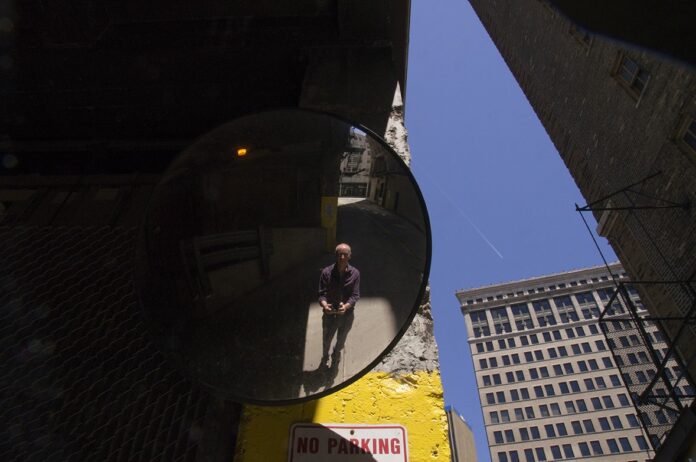By Dick Blau
Dick Blau is Professor Emeritus of Film, Video, Animation and New Genres at UWM’s Peck School of the Arts. His photographs and films have been exhibited internationally and are included in a number of museum collections.
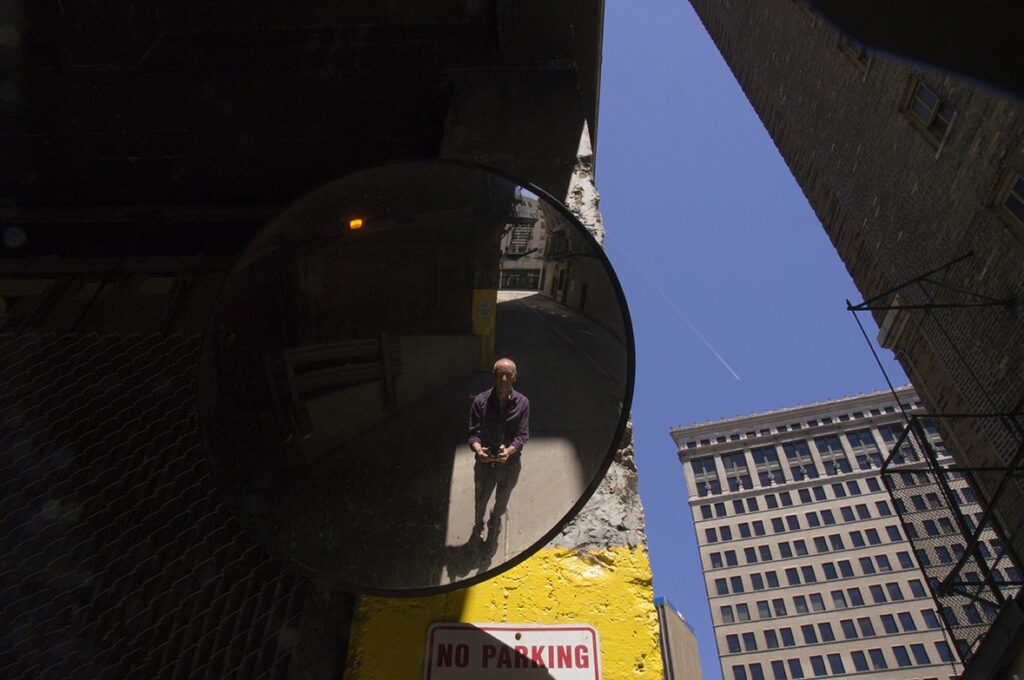
In 2009, Jane and I moved from our beautiful and boring East Side neighborhood to the very center of Milwaukee, trading our house for a loft on the 8th floor of what had been an old furniture store just west of the river that bisects downtown. The neighborhood was underdeveloped when we moved in. A mall on nearby Wisconsin Avenue was virtually empty, and the building across from us had been a shell for many years. After the office workers left for the day, the streets were very dark and very quiet.
I loved it up there. We were located at the roofline of the surrounding buildings, and the views in two directions, not to speak of the sky itself, were simply gorgeous. I could also look down onto a major intersection, with two bus stops and a bar. I’d never been much interested in cityscapes or landscapes before. To date, my work had centered on the psychodynamics of family life and on studies of music, dance, and performance in other cultures. Looking down from my perch at the small and large human dramas that unfolded every day, I felt a bit like a modern-day Brueghel, standing on the hill above the village that was so often his subject.
Things really took off, however, when we got a dog. It was my job to walk Gigi. Around the block we went, morning, noon and night through all weathers and seasons, each of us mapping our terrain in his and her own way. It was during those walks that I really got to know the street, to see the traces of those who had passed through, to meditate its random, often mysterious beauty, and to witness the moments of its pathos.
At first I took pictures because that is what I do, with no particular end in mind, but as my print drawer started to fill up, I started thinking of it as an actual art project, gave it a name—730, which is the address of our building on North Plankinton Ave. between Wisconsin and Wells—and began working out how it might be displayed. There were two empty spots in the lobby of the building, both centrally located near the mailboxes. This was ideal. 80 people would flow by daily. Over time, I thought, my installation might prompt a kind of conversation.
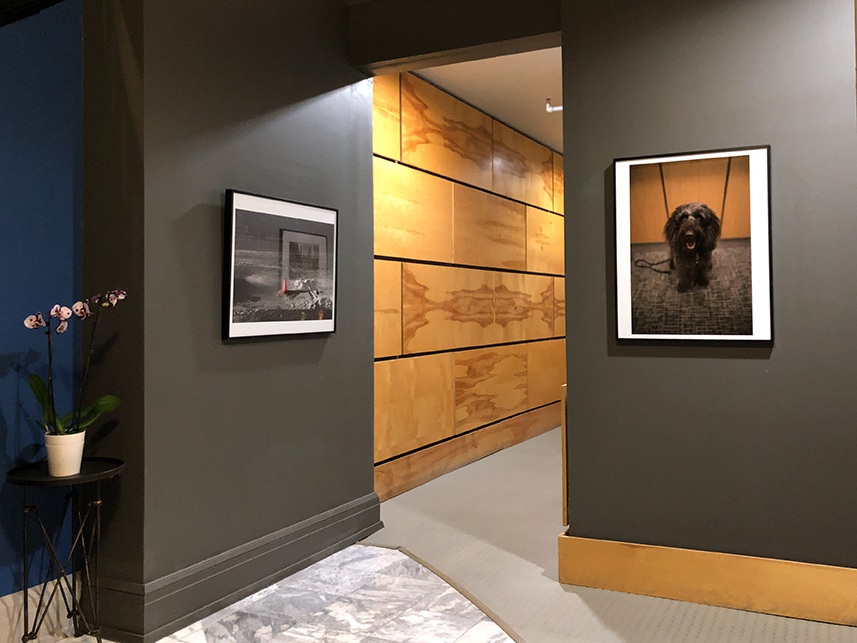
I started by taping the pictures up. No name attached. I would try to change them every 7 to 10 days or so. There was no explanation. The only rule was implicit: the pictures must all have been made either in the building or on the route around the block that I took with Gigi.
Along with the recognizable images of the neighborhood and its events, I mixed in two other sets of images. First was a series of abstractions I had made in the often-overlooked parts of our common space. I saw it as a kind of challenge: to make an art object out of something that would normally be dismissed as “nothing” just by the way you framed it. The other was a study of the parallel life of the neighborhood gulls who lived across the street.
My neighbors’ response was delightful. People began to talk to me in the elevator, trying to figure out where they had seen a certain image. 730 became a kind of game, a playful sort of pedagogy that encouraged people to look at things they’d never noticed and see them in a different way. As I taped up more and more pictures, the Board got involved and bought me some frames. The 730 Project was born.
As my print files came close to overflowing—I was printing every day—I began to think about where else I might store the pictures I had already shown. Realizing that there was a good deal of history as well as art in my photographs, I approached the Milwaukee County Historical Society. It’s a wonderful civic institution in a glorious Beaux Arts building and located just two blocks north of where the photographs were taken. In 2017, I donated the 200 photographs to the MCHS Archive.
Since our building is locked, I had come to think of The 730 Project as a somewhat private affair. When I described it to my friends, I used to joke that it was a semi-public art project. Now that the pictures were located elsewhere, I began thinking about how to open 730 up to a larger audience—and how in the world to show the huge numbers of images that I had made. My solution was to make an hour-long film loop, which I would eventually project, accompanied by live piano, on three large television monitors in the bar of Mo’s Steakhouse which sits just south of my building. I staged four 4-hour screenings at Mo’s over the next three months.
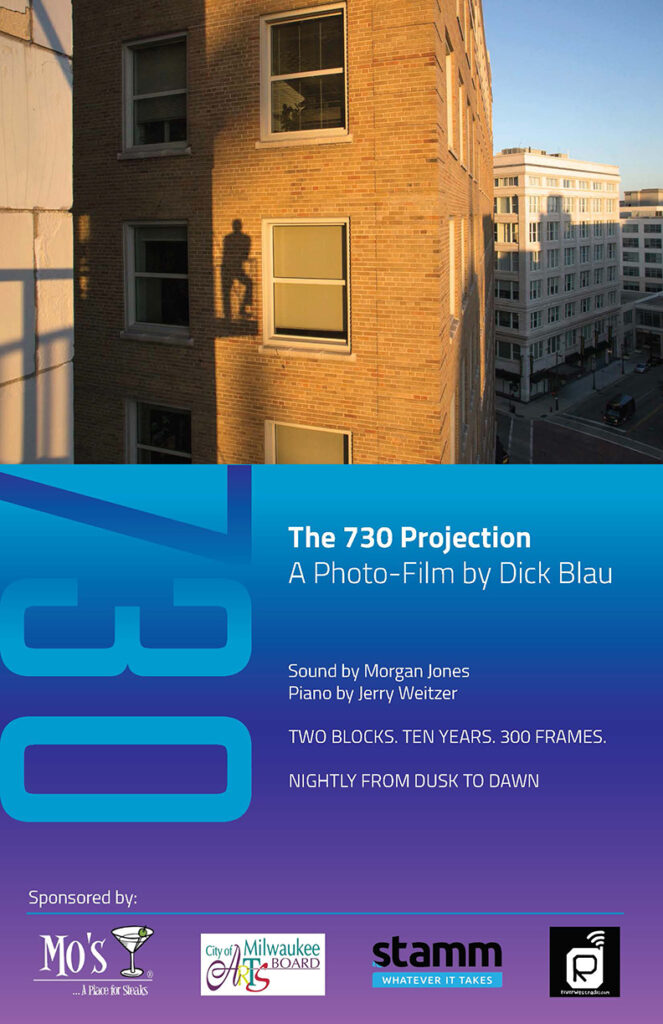
My next move was to take The 730 Project even further outside, installing it as a rear projection in an empty storefront on Milwaukee’s main street, Wisconsin Avenue. I put a small bench in as well—the only one on the entire avenue—so people could watch in comfort. Then I added an environmental soundtrack, including music from Mo’s and from my walks. (It was recorded by Morgan Jones.) I would start sound and image at dusk, then turn off the sound at 11PM, and then come back on my morning walk with Gigi and turn off the picture. The 730 Projection ran nightly for 15 months in 2018-19.
After the 730 Projection closed, I decided to make a proper film. The Projection was organized randomly, following the chronology of my shooting, one image slowly dissolving in into another. While this seemed appropriate for the casual passerby on the street, I thought this version would need more structure.
In its next iteration, I organized the images into more coherent sections and tried to tease out the underlying narratives that informed my pictorial interests over the course of the project. In this version, I and my brilliant editor, Yinan Wang, ended up constructing a kind of Joycean day out of the materials. We also took on the formal questions that arise when one tries to make a film out of still pictures, pushing and pulling the time of the images, playing with fades and dissolves, not to speak of the sounds that Yinan had newly recorded along with a number of jazz compositions/improvisations that my friend and colleague Steven Feld had given to me after looking at the pictures. In addition to Feld himself, the musical ensemble whose work brings so much to the film includes Nii Noi Nortey, Niii Otoo Annan, Alex Coke, and Tom Guralnick.
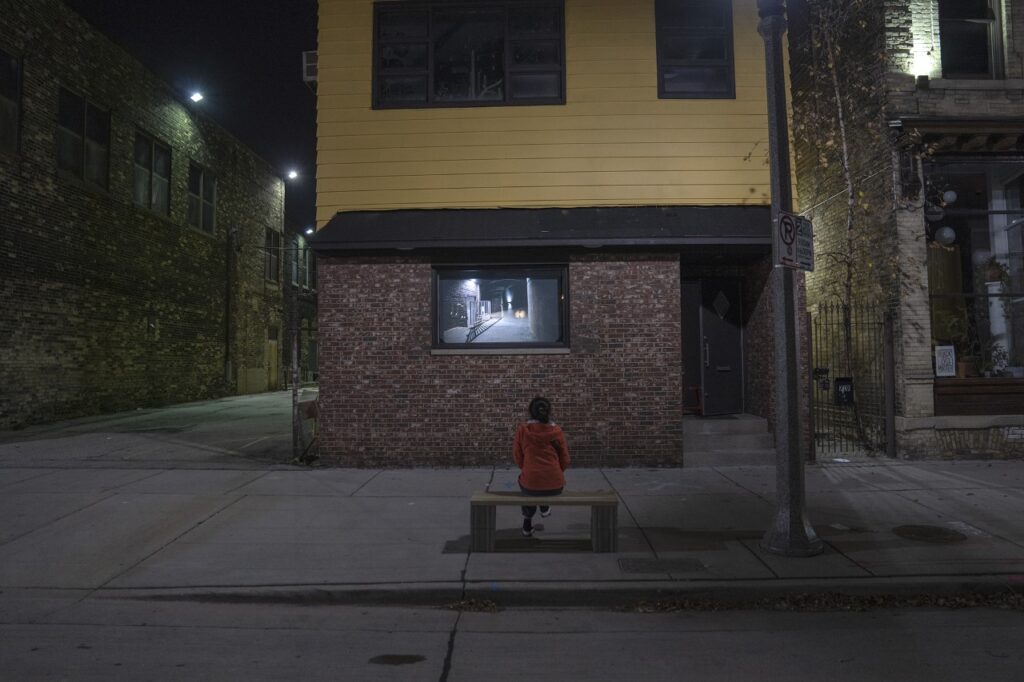
The film, now titled MILWAUKEE NIGHT AND DAY, will have its world premiere this month at The Suburban in Milwaukee. It will be another rear projection, this time playing 24 hours a day, emerging at dark and disappearing in the morning, from November 6th through January 1st in the gallery window at 723 S 5th Street, Milwaukee, Wisconsin 53204.
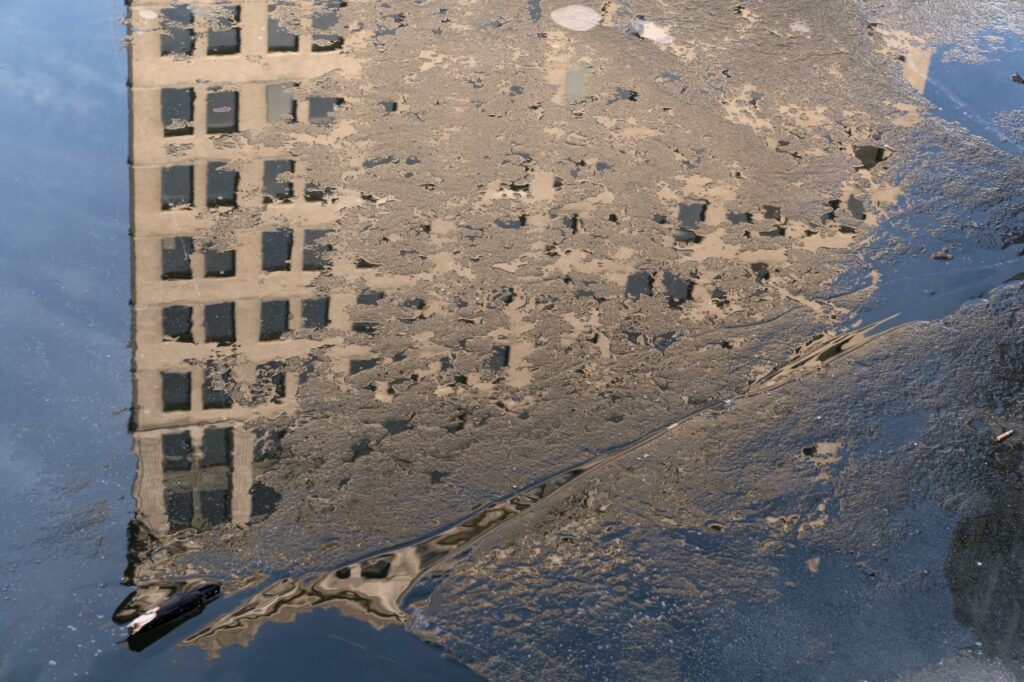
Along with the projection of Milwaukee Night and Day and closer to home, I will also be opening a small show at St. Kate’s Art Hotel of abstractions that I’ve been making of the river that flows just behind our building. Some of them are in the film; others, however, are quite new, made during Milwaukee’s spring/summer Covid lockdown when I was limited to one short walk a day. Staring at the waters with a kind of intensity that had everything to do with the limits I was under, I think I had something of a breakthrough, into a realm of…visceral abstraction.
The exhibition at St. Kate’s will open in Spring 2021; the exhibition at The Suburban is currently open.

